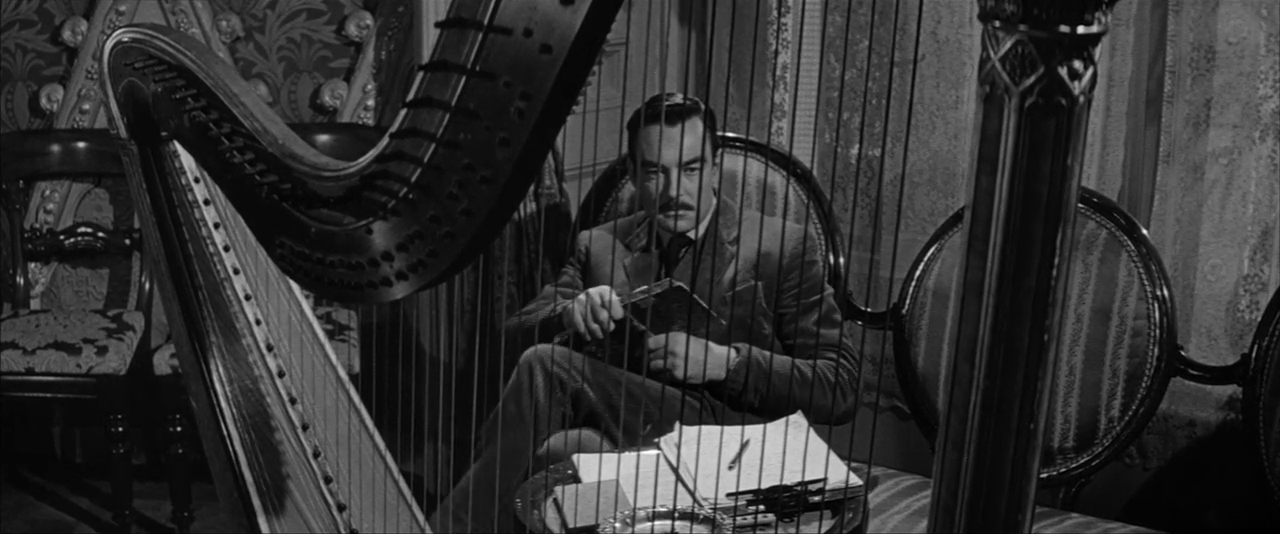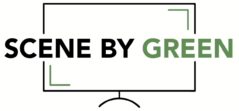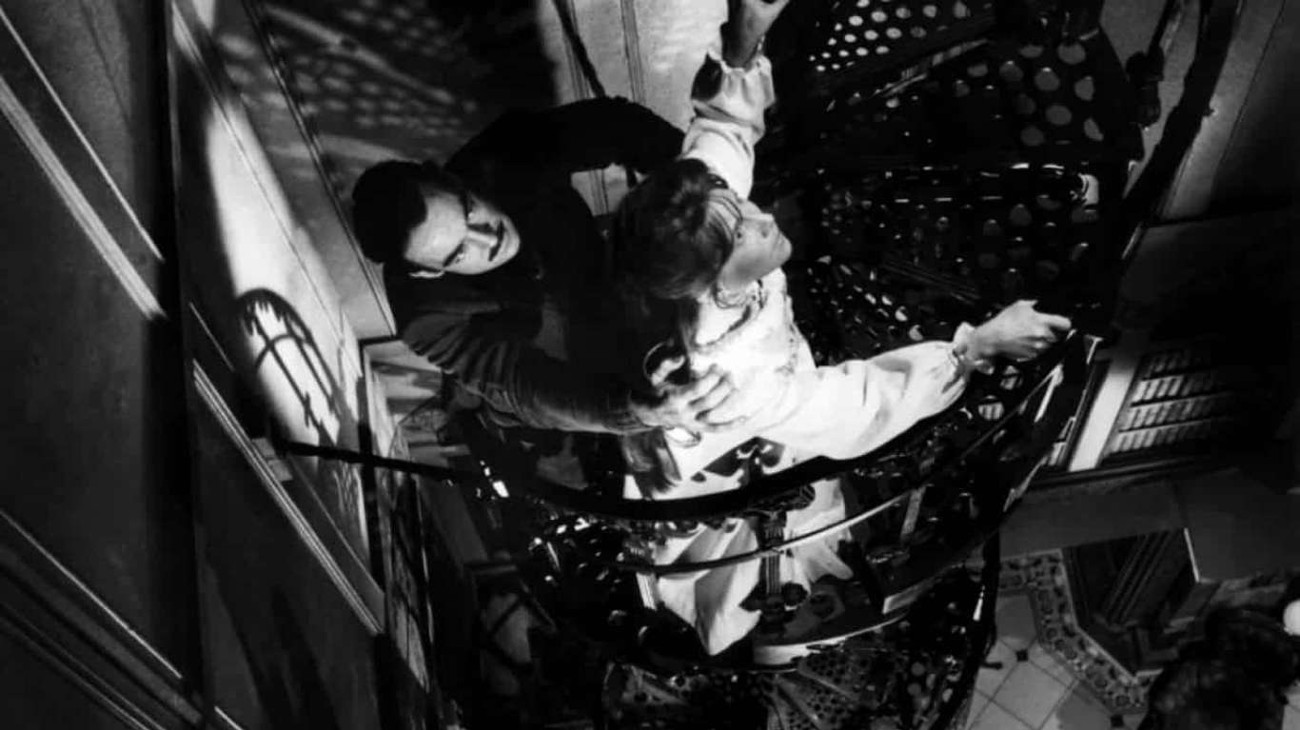Robert Wise | 1hr 52min

There is little sense to be made from the perplexing layout of the 90-year-old Massachusetts manor, Hill House. Doors that are built slightly off-centre slam shut seemingly of their own accord, and there is not a single square corner to be found in the entire building, making navigation of its distorted corridors and cluttered rooms particularly difficult. The Gothic décor of dark floral fabrics and ornate wooden furniture looks as if they have been preserved in time for many decades too, reeking a deathly odour that has not quite let go of old grudges and traumas. Robert Wise forces us into a heavily subjective and wildly disorientating perspective here, twisting, turning, and tilting his camera at all angles like an angry spirit, though even his static wide shots appear to warp the dimensions of the space in his widescreen aspect ratio.
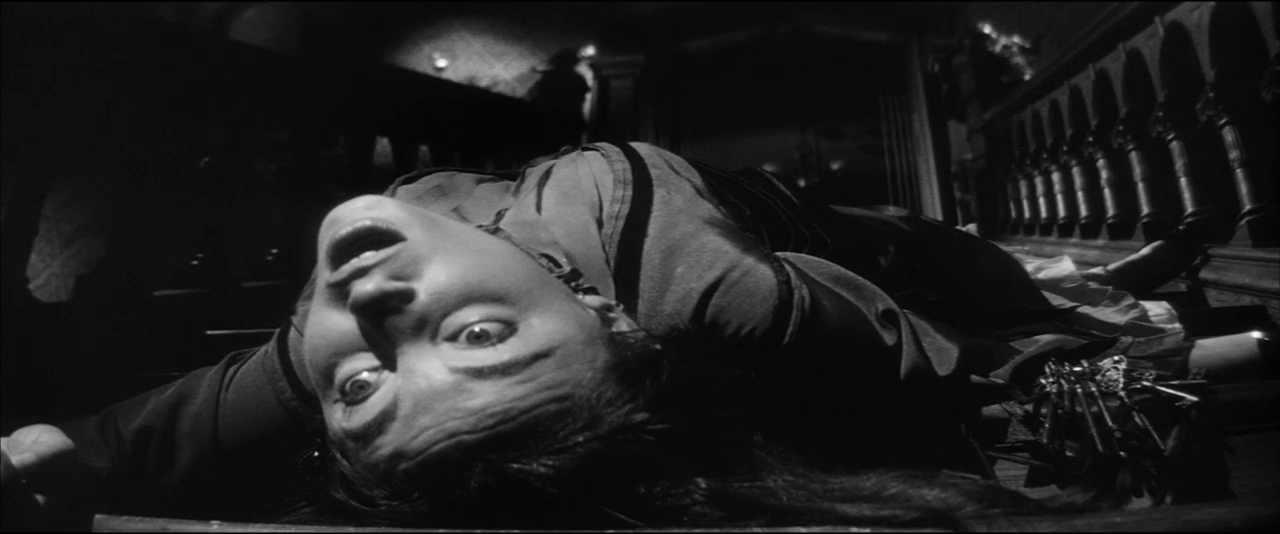
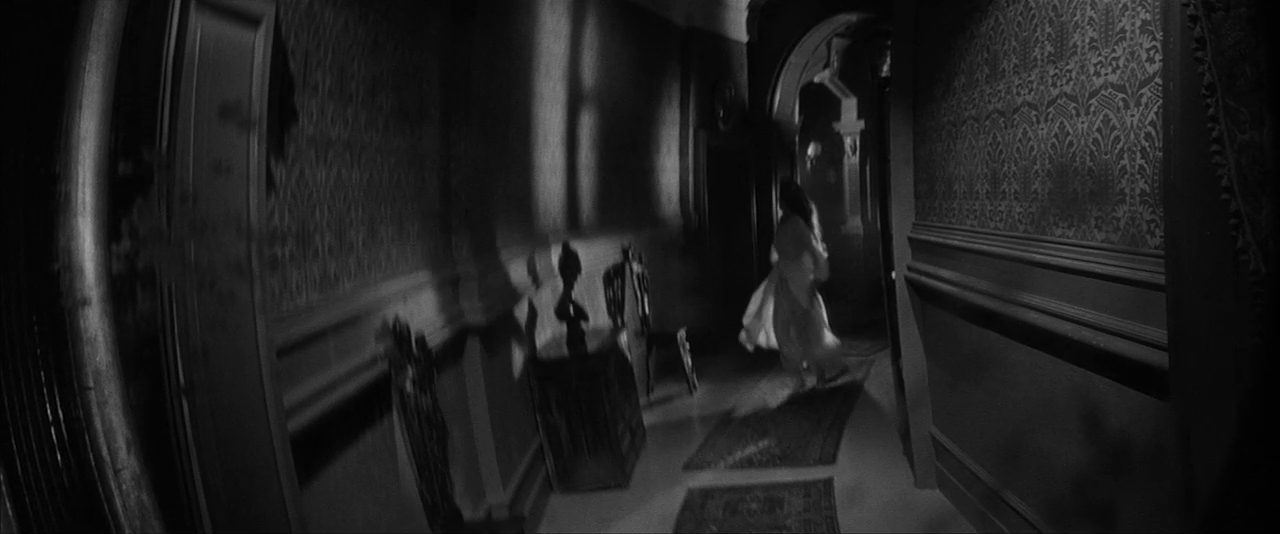
If there is anything that consistently lets us recalibrate our senses, it is Wise’s recurring cutaways to the imposing exterior of Hill House, rising from the estate in low angles that shrink us beneath its pointed turrets and stony columns. The infrared film stock use for these establishing shots has its own eerie effect as well, darkening the daylit sky to suggest a sinister presence permanently hanging over the cursed establishment. In terms of pure visual representation, there is very little that explicitly confirms the presence of ghosts in The Haunting, and yet Wise’s cinematic manipulations settle a terrifying ambiguity across the mansion that paranormal expert Dr. John Markway believes may contain “a key to another world.”
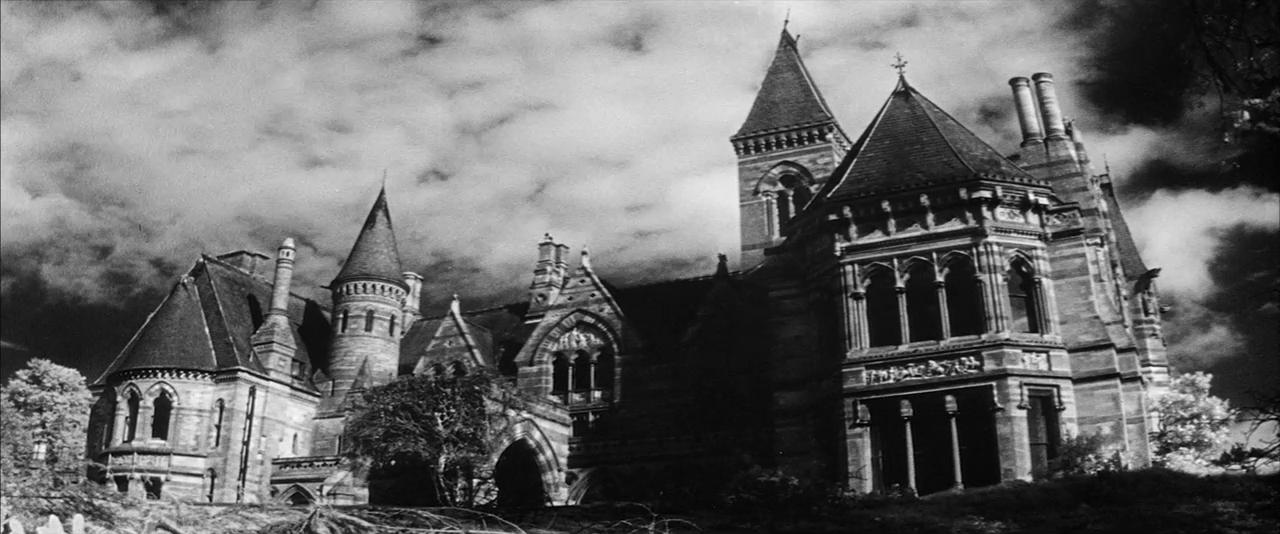
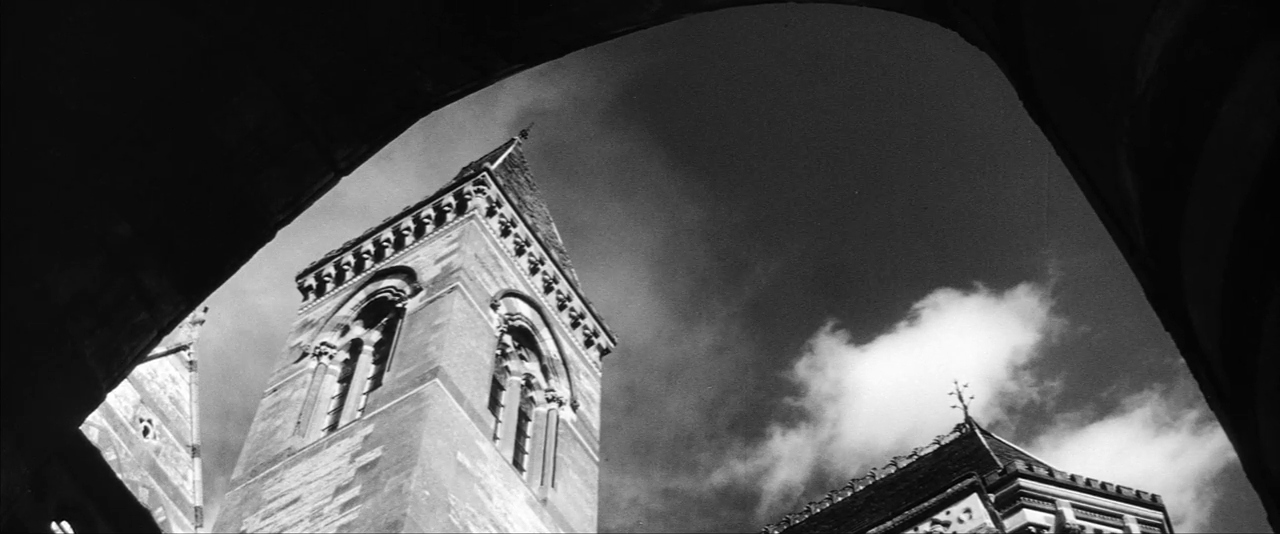
The small group of assistants he invites to help study the reported supernatural activity of Hill House are an odd group of misfits. Theodora is a psychic whose belief in the occult strikes a harsh contrast against the cocky scepticism of Luke, the young heir of the estate. Eleanor sits somewhere between the two – she is shaken by uncertainty, and yet she also experiences a strange, psychological attraction towards the manor. It is almost as if it understands her on a personal level, penetrating the veil of secrecy that surrounds the recent death of her mother to draw out her repressed trauma, guilt, and grief.
Given the parallels between Eleanor and Hill House’s backstories, it is not too hard to see why she finds such a twisted sense of belonging there. Dr. Markway sets the scene in a prologue that covers decades of the mansion’s history, narrating the “scandal, murder, insanity, suicide” that began the moment the wife of the original owner, Hugh Crain, arrived on the property, passing away as her carriage violently crashed into a tree. The second Mrs Crain would also perish here, falling down a rickety spiral staircase in the library – the same location a nurse would hang herself many years later after failing to respond to the calls of an elderly Abigail Crain, Hugh’s daughter, who died in the nursery she grew up in.
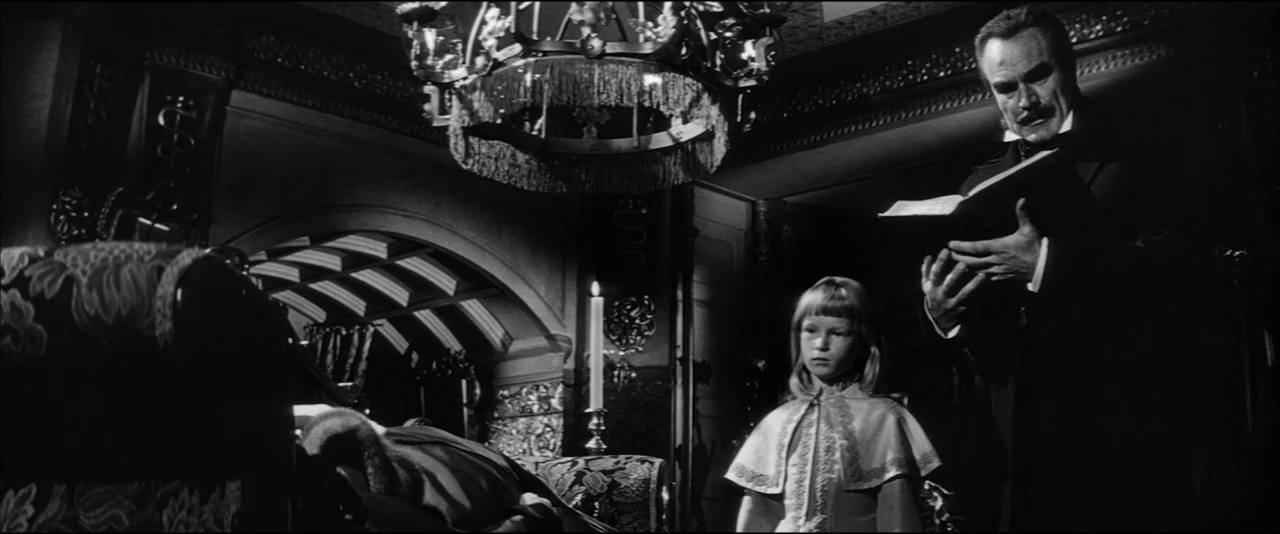
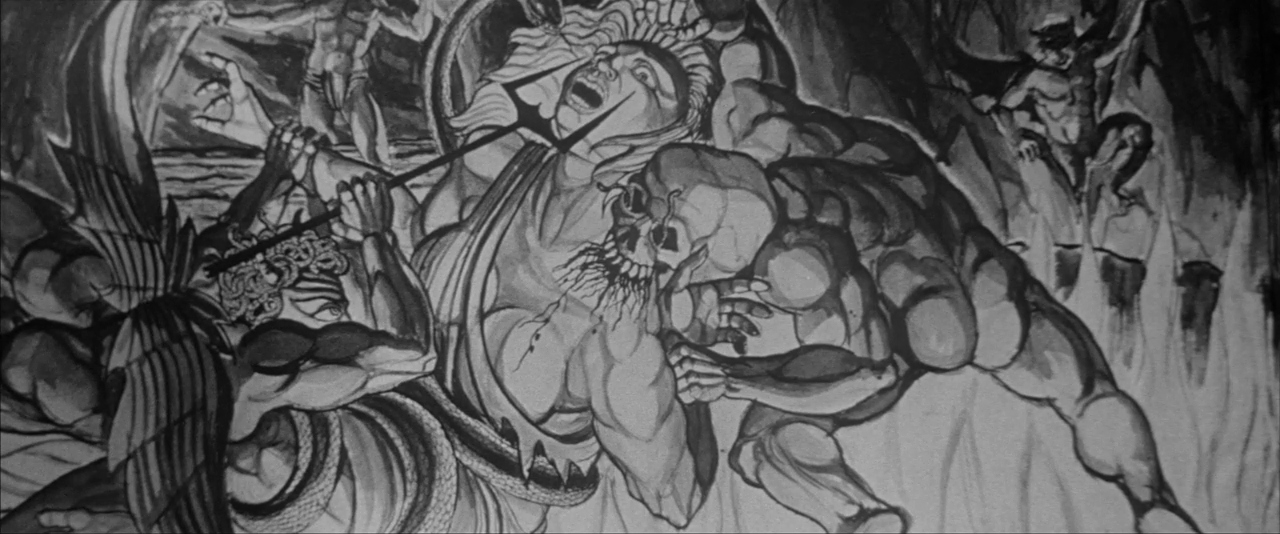
A brilliant formal conceit is thus set in what essentially becomes a supernatural prophecy, promising us that the deaths of all four women will continue to echo forwards through time. As we come to discover, the fate of Abigail Crain bears a horrifying resemblance to the demise of Eleanor’s mother, whose knocking on the wall for help went ignored by her daughter. Now as Eleanor takes up accommodation in Hill House, Wise’s camera carefully traces the sound of pounding as it moves around the edges of her bedroom, exposing her heavy conscience and thus making her more susceptible to the house’s evil influence. Subtly binding her even closer to the deceased denizens of this mansion too is the reverberant voiceover that effectively disembodies her inner thoughts, foreshadowing a ghostly destiny alongside those women who fell to its dark charm.
“I’m disappearing inch by inch into this house.”
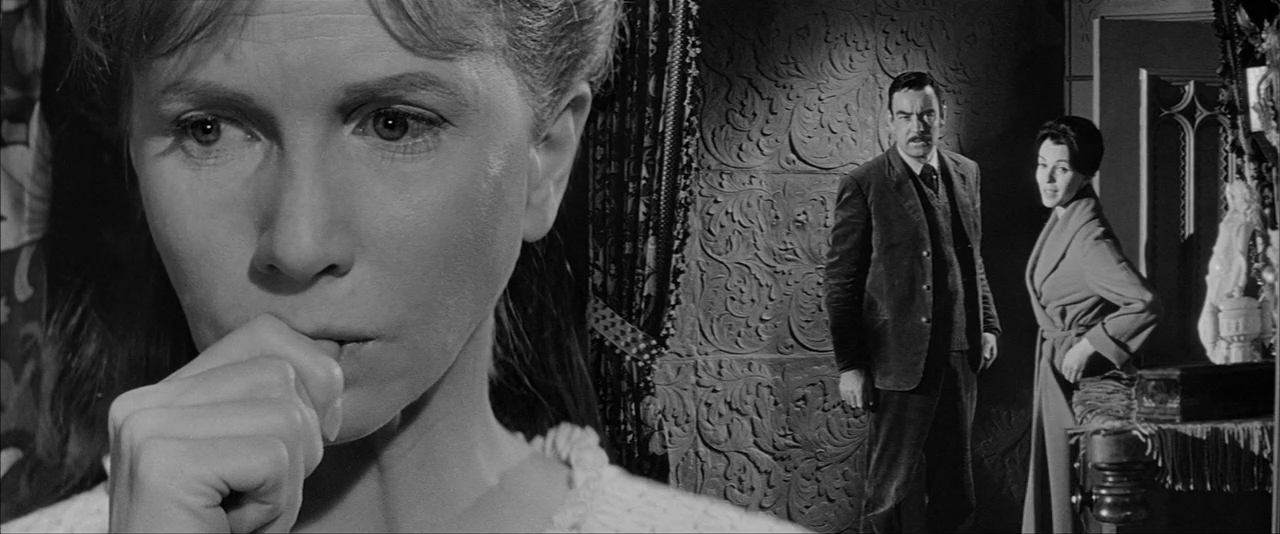
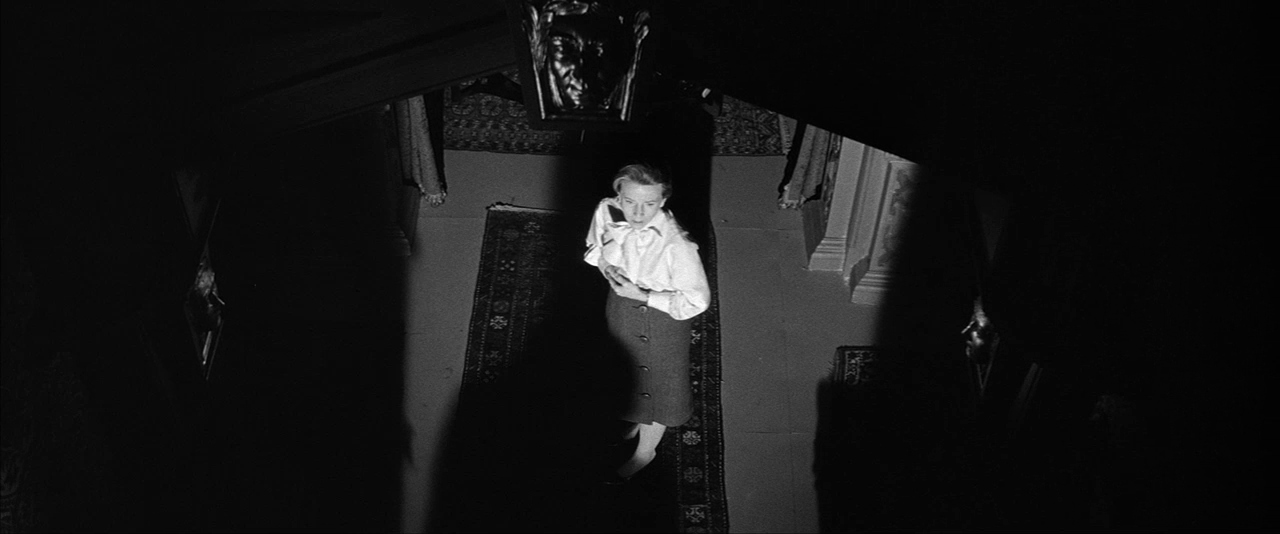
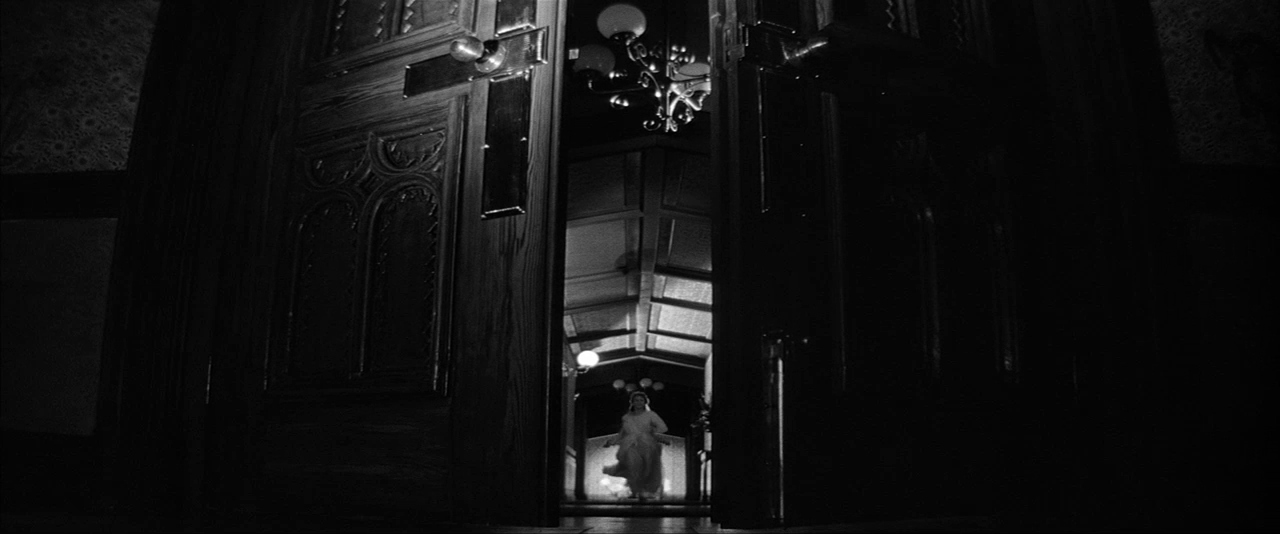
Given the expressionistic shadows which spring to life around her through Wise’s masterful lighting and blocking, this notion of Hill House gradually consuming her mind and soul manifests visually as well as symbolically. His astounding depth of field calls all the way back to his days working with Orson Welles, approaching his blocking, camera angles, and Victorian architecture with an absolute precision that subjugates us to the mansion’s imposing design. “The house watches every move we make,” these visitors whisper, and indeed Wise makes them truly vulnerable in our sights, trapping them in its claustrophobic clutter and spying on them from above in dizzying overhead shots.
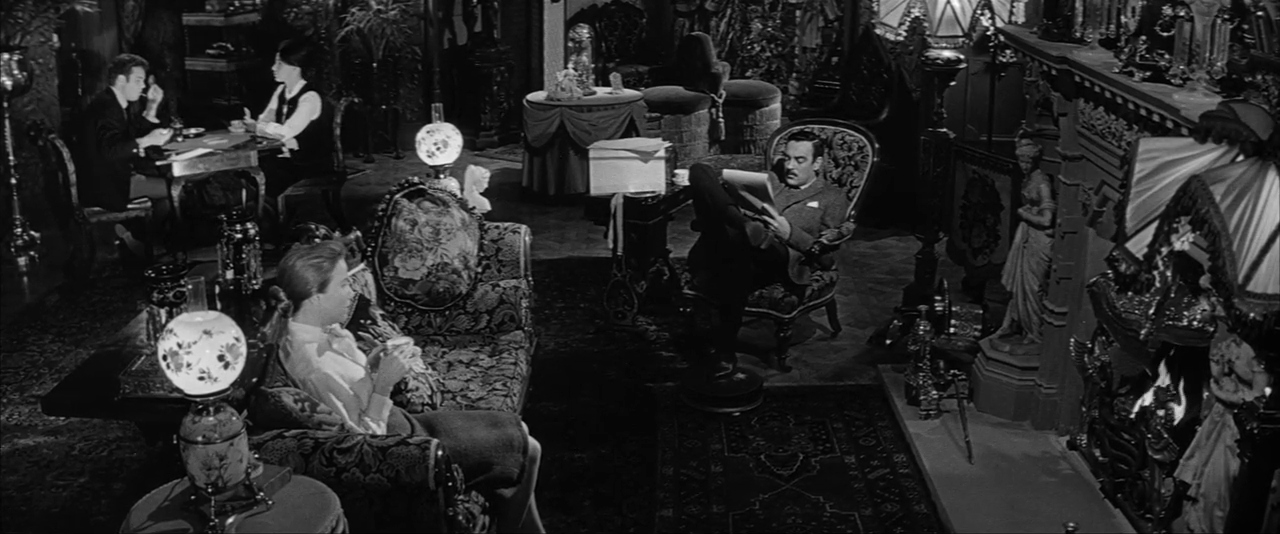
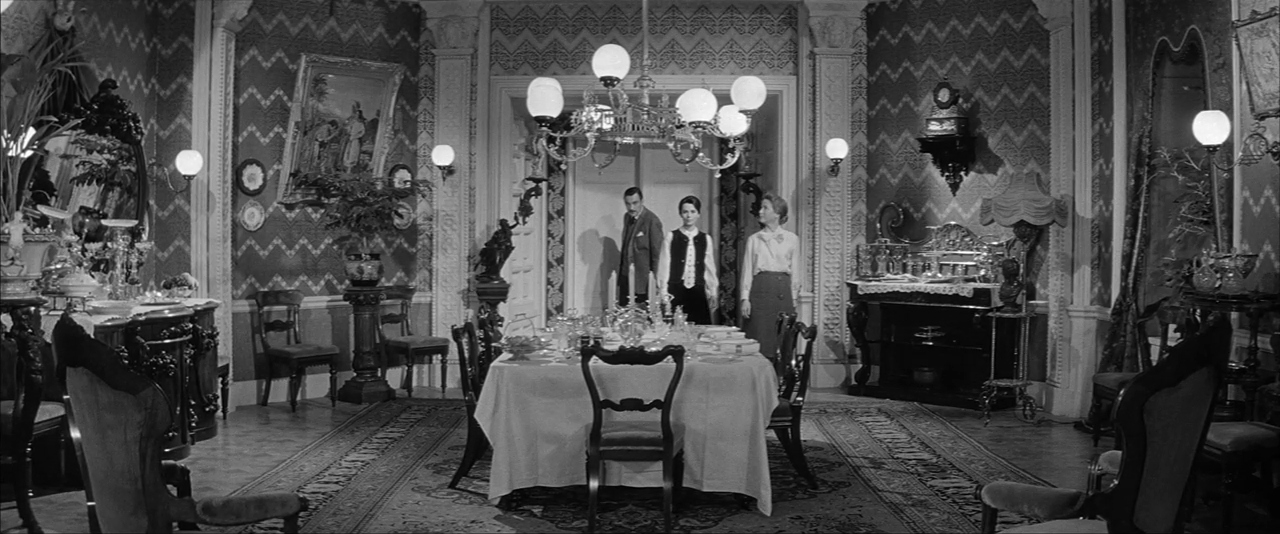
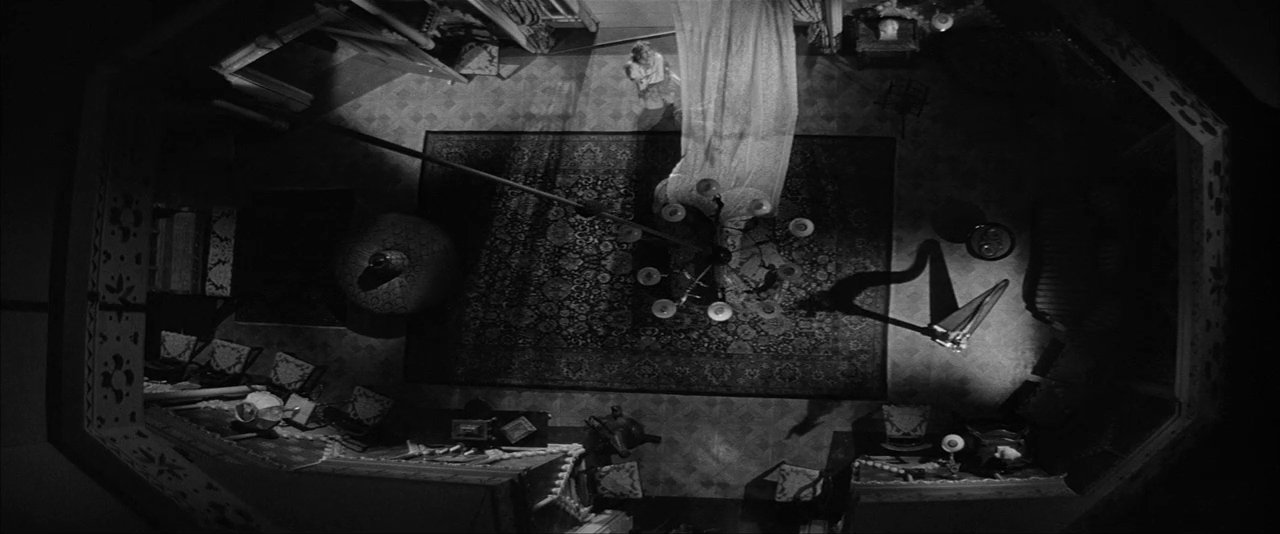
The Haunting’s magnificent mise-en-scène may be Wellesian, and yet its controlled camera movements and suspenseful editing are almost directly inspired by Alfred Hitchcock, pulling us into Eleanor’s uneasy state of mind. Even here though, there is a huge contrast between those slow tracking shots floating above the sleeping visitors and the crane shots rapidly dropping from the ceiling to the floor, throwing us off with a disorientating visual whiplash. Wise’s stylistic repertoire is vast, and when paired with his anxiety-inducing set pieces the effect is often chilling. Palms sweat as the camera follows characters up the spiral staircase that creaks and sways, and when Wise’s eerie practical effects make a wooden door bulge inward, he restlessly cuts between every canted, high, and low angle that he possibly can, each one more extreme than the last.
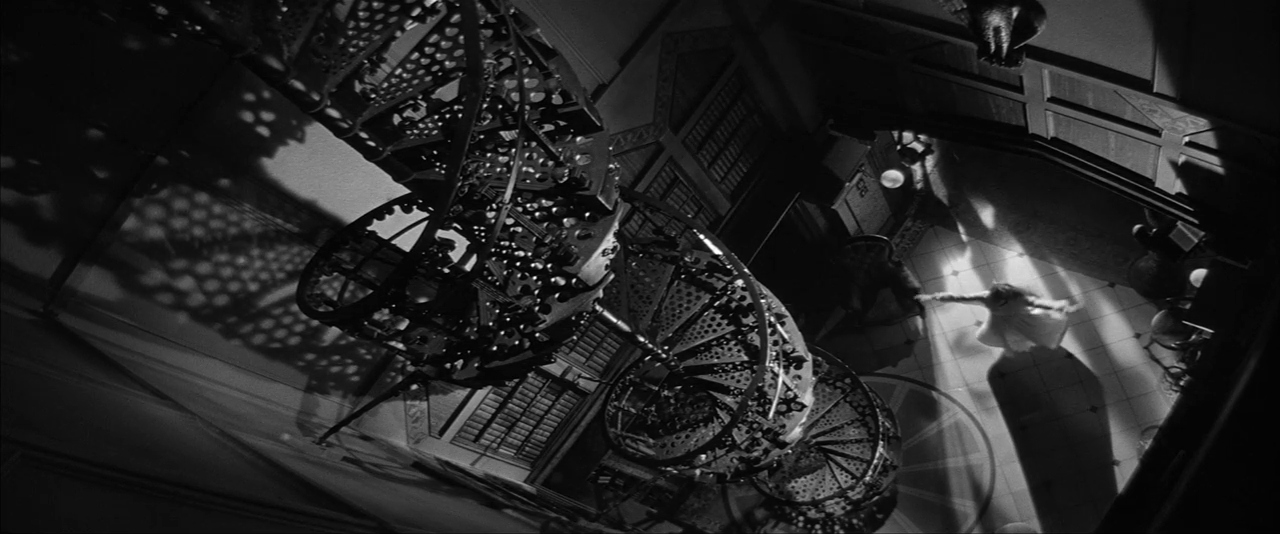
It is all too easy to fall under the influence of a cinematic technician as inventive as Wise, placing us right next to Eleanor as her trauma begins to take physical form and tampers with her perception of reality. Whether it is the manor’s ghosts or merely Eleanor’s self-fulfilling belief in them which possesses her frantic mind, her connection to the estate offers a meaningful purpose she has never felt before. Hill House accepts her as she is, and so finally the fear and neurosis that has eaten away at her mind long before arriving on its estate can be expressed outwardly. “Something at last is really, really, really happening to me,” she rejoices as she careens her car towards the same tree that the first Mrs Crain crashed into ninety years ago, unknowingly connecting the manor’s final death back to its very first. The living suffer terribly in The Haunting, but for those who have endured the deepest psychological pains of all, the only sanctuary left in the world willing to embrace them is this giant crypt of infinite despair.
The Haunting is currently available to rent or buy on Apple TV, Amazon Video, Google Play, and YouTube. You can also buy The Haunting on DVD and Blu-ray from Amazon.
